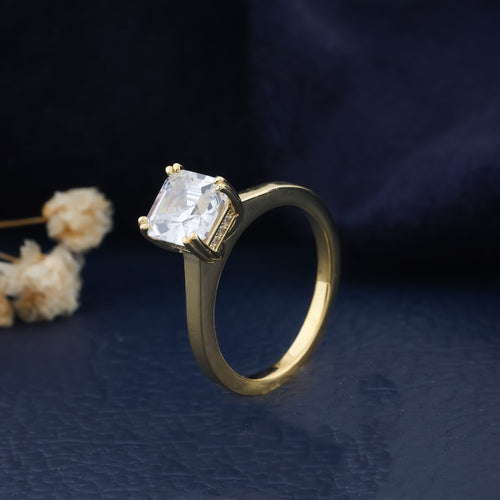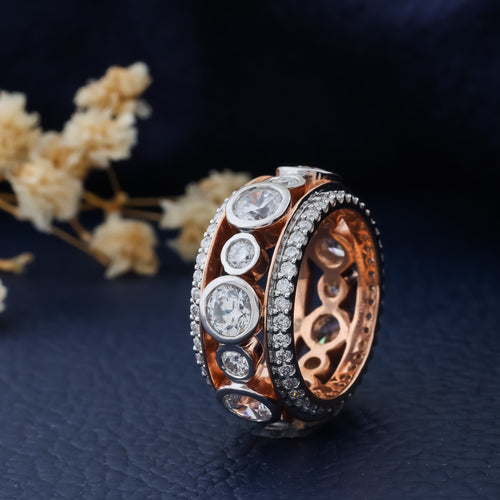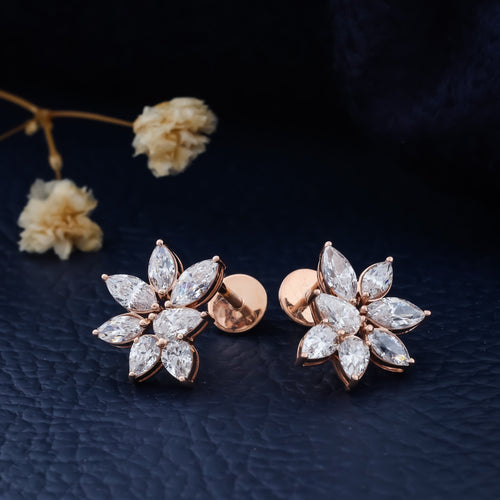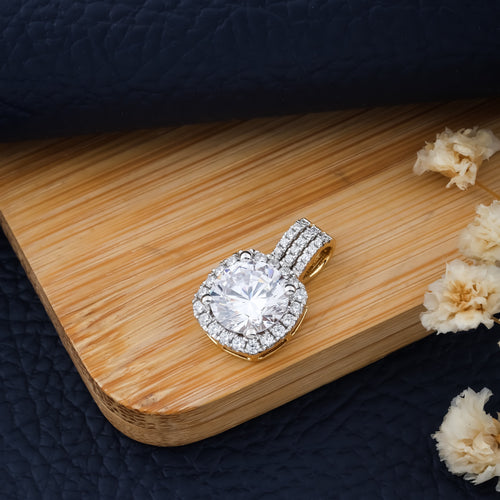LAB GROWN VS MOISSANITE
💎 LAB GROWN VS MOISSANITE – FULL COMPARISON
| Feature | Lab Grown Diamond | Moissanite |
|---|---|---|
| 1. Composition | Carbon (C) – Same as natural diamonds | Silicon Carbide (SiC) |
| 2. Visual Appearance | White brilliance, classic diamond look | Firey rainbow sparkle, more colorful |
| 3. Refractive Index | ~2.42 | ~2.65 (more sparkly) |
| 4. Hardness (Mohs scale) | 10 – Maximum durability | 9.25 – Very durable, but not as hard |
| 5. Heat Resistance | Very high | High, but less than diamond |
| 6. Color Options | D–K range, also fancy colors available | Mostly near colorless (G–I), some warm tones in larger stones |
| 7. Clarity | Usually VS or higher | Eye-clean; inclusions rare |
| 8. Price (per carat) | ₹40,000–₹80,000 ($500–$1,000 USD) | ₹5,000–₹25,000 ($60–$300 USD) |
| 9. Certification | IGI, GIA, GCAL certified | Generally not certified by diamond labs |
| 10. Environmental Impact | Low (lab grown) | Very low |
______________________________________________________________________________________________
Lab-grown diamonds and moissanite are both popular alternatives to natural diamonds, but they differ significantly in composition, properties, and appeal. Here's a concise comparison based on available information:
1. Composition
- Lab-Grown Diamonds: These are real diamonds, chemically and physically identical to mined diamonds. They are made of carbon atoms arranged in a diamond crystal structure, created in a lab using processes like High-Pressure High-Temperature (HPHT) or Chemical Vapor Deposition (CVD).
- Moissanite: A gemstone made of silicon carbide (SiC), naturally occurring in minute quantities but almost always lab-created for jewelry. It’s not a diamond but a distinct gem with similar visual appeal.
2. Appearance
- Lab-Grown Diamonds: Indistinguishable from natural diamonds to the naked eye. They have the same sparkle, fire, and brilliance, graded using the same 4Cs (cut, color, clarity, carat).
- Moissanite: Mimics diamonds but has more colorful sparkle (higher dispersion, creating rainbow-like flashes). Some may notice a slight difference under certain lighting, especially in larger stones. Moissanite can appear less "white" than diamonds, sometimes showing a faint yellow or green tint.
3. Hardness and Durability
- Lab-Grown Diamonds: Score 10 on the Mohs scale, the hardest known material, highly resistant to scratches and wear.
- Moissanite: Scores 9.25-9.5 on the Mohs scale, very durable but slightly less hard than diamonds, making it more prone to scratches over time.
4. Cost
- Lab-Grown Diamonds: Significantly cheaper than mined diamonds (30-50% less, depending on size and quality), but more expensive than moissanite. For example, a 1-carat lab-grown diamond might cost $1,000-$3,000, depending on quality.
- Moissanite: Much more affordable, often 10-20% of the cost of a natural diamond. A 1-carat moissanite can cost $300-$600.
5. Ethical and Environmental Impact
- Lab-Grown Diamonds: Generally considered more ethical and eco-friendly than mined diamonds, as they avoid mining’s environmental damage and potential human rights issues. However, production requires significant energy, though some labs use renewable sources.
- Moissanite: Also ethically produced, as it’s lab-created with minimal environmental impact. No mining is involved, making it a sustainable choice.
6. Resale Value and Perception
- Lab-Grown Diamonds: Retain some resale value, though less than natural diamonds. They’re increasingly accepted in the market but may still carry a perception of being "less prestigious" by some traditionalists.
- Moissanite: Little to no resale value. Often seen as a budget-friendly diamond alternative, but it’s not a diamond, which may affect its perceived value in fine jewelry.
7. Certification and Identification
- Lab-Grown Diamonds: Often come with certifications from gemological institutes (e.g., GIA, IGI) specifying they’re lab-grown. They require specialized equipment to distinguish from natural diamonds.
- Moissanite: Easily identified by gemologists due to its different optical properties (e.g., double refraction). Certifications are less common but available from some retailers.
🔹 Brilliance
-
Lab Diamond: Softer light reflections, natural look.
-
Moissanite: Higher brilliance (2.65 RI) with colorful fire, sometimes seen as “too sparkly.”
🔹 Weight
-
Moissanite is lighter than diamonds. A 1-carat moissanite will look slightly bigger than a 1-carat lab diamond.
| Gem | Size Equivalent | Weight |
|---|---|---|
| 1.0 ct Lab Diamond | 6.5 mm | 1.00 ct |
| 1.0 ct Moissanite | 6.5 mm | ~0.88 ct |
🛍️ Which Should You Choose?
| Choose Lab Grown Diamond If | Choose Moissanite If |
|---|---|
| You want a real diamond | You want sparkle + value |
| You care about traditional look | You like rainbow fire |
| You need IGI/GIA certification | You don’t mind non-diamond labels |
| You have ₹50K+ budget | You want a 1–2 ct ring under ₹20K |





